Analysis of Employee Engagement and Motivation Theories Report
VerifiedAdded on 2020/02/14
|17
|4947
|34
Report
AI Summary
This report delves into the critical aspects of employee engagement and motivation within organizations. It begins by summarizing Douglas McGregor's X-Y theory, highlighting the differences between authoritarian and participative management styles and their impact on employee satisfaction and organizational culture. The report then examines the role of money as a key driver of employee engagement, emphasizing its importance in motivating employees and fostering commitment. It explores McClelland's motivational theory and Maslow's hierarchy of needs, illustrating how these theories provide insights into employee needs and how organizations can tailor strategies to meet them. Furthermore, the report compares the employee engagement techniques used at Marks & Spencer and Debenhams, providing a practical application of the theories discussed. The analysis emphasizes the significance of leadership, monetary incentives, and creating a supportive work environment to enhance employee performance and achieve organizational goals.
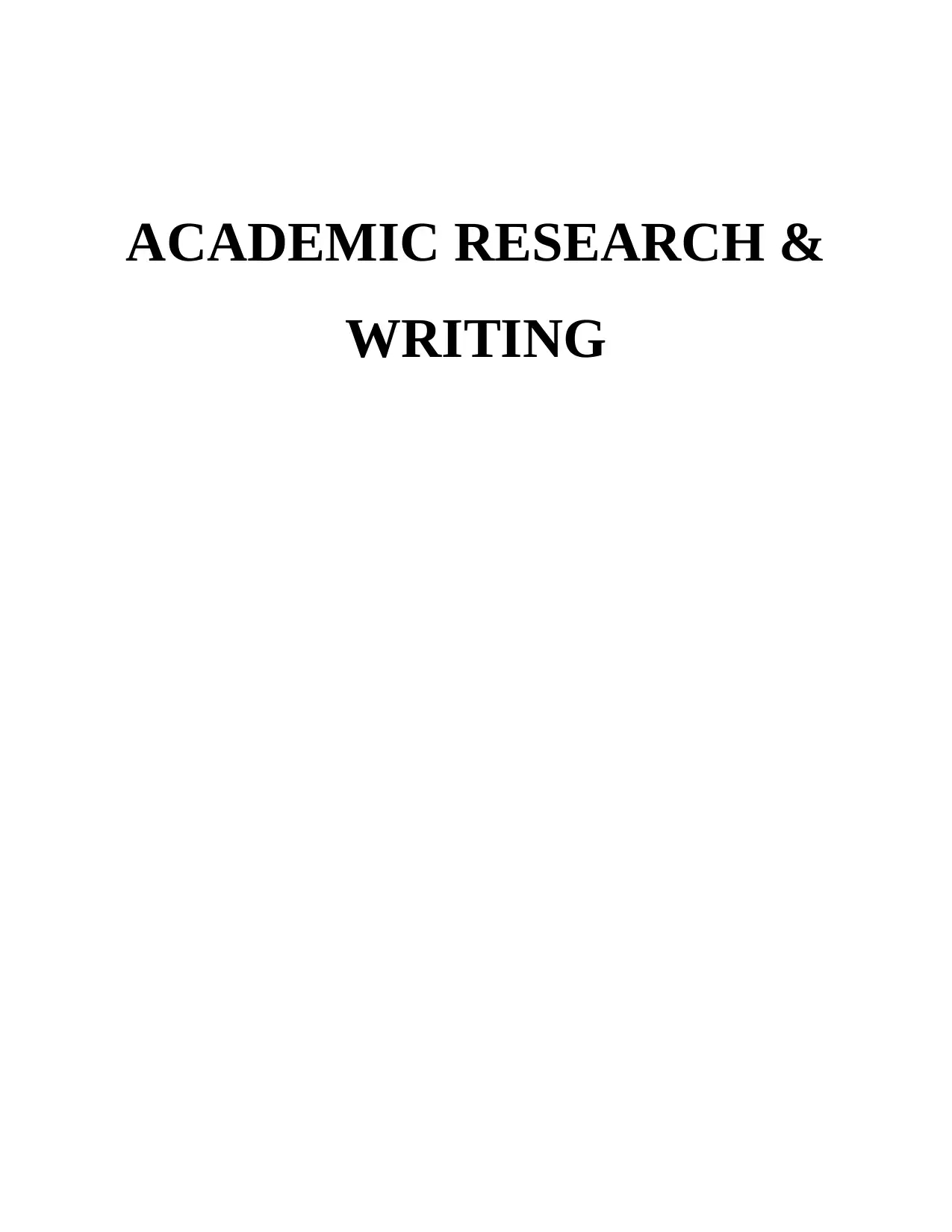
ACADEMIC RESEARCH &
WRITING
WRITING
Paraphrase This Document
Need a fresh take? Get an instant paraphrase of this document with our AI Paraphraser
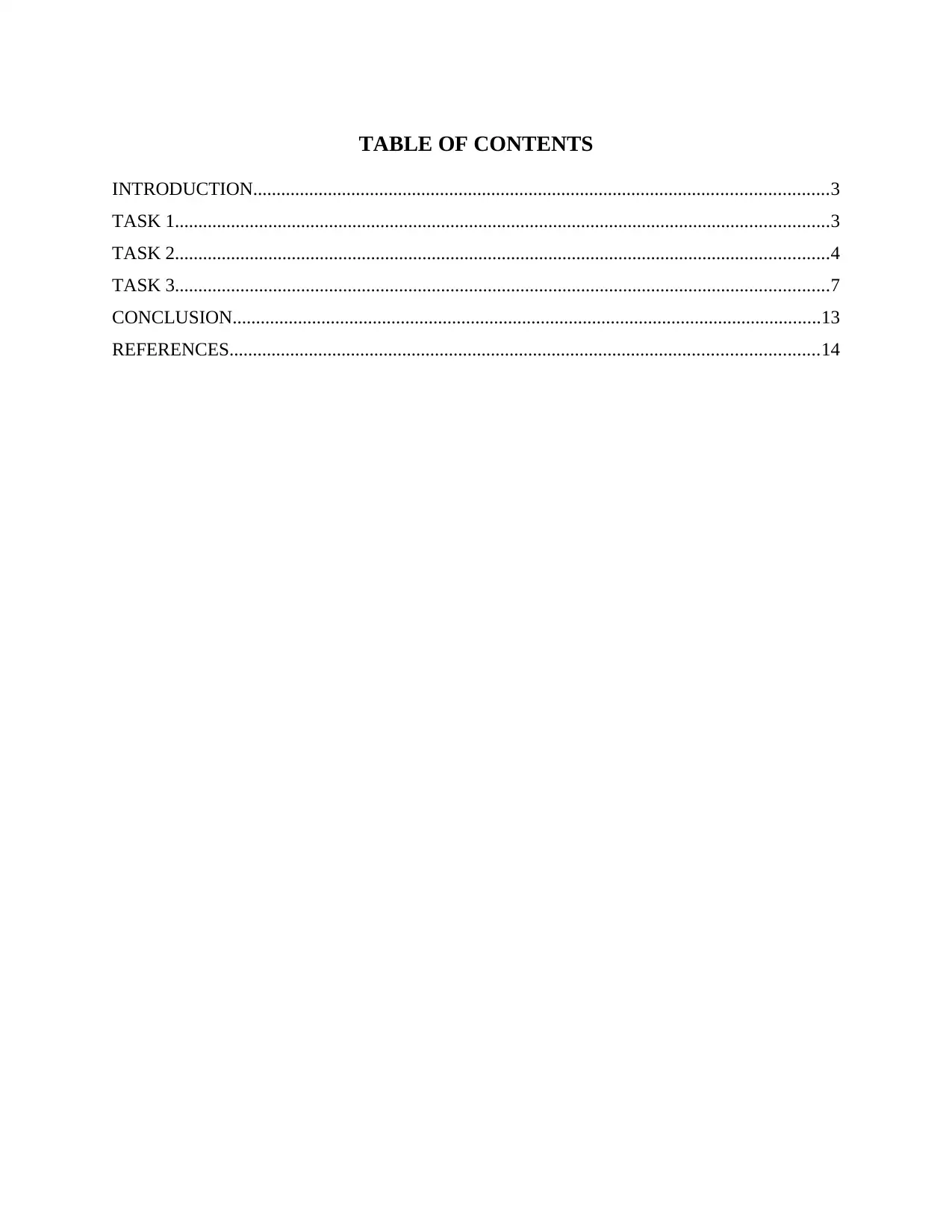
TABLE OF CONTENTS
INTRODUCTION...........................................................................................................................3
TASK 1............................................................................................................................................3
TASK 2............................................................................................................................................4
TASK 3............................................................................................................................................7
CONCLUSION..............................................................................................................................13
REFERENCES..............................................................................................................................14
INTRODUCTION...........................................................................................................................3
TASK 1............................................................................................................................................3
TASK 2............................................................................................................................................4
TASK 3............................................................................................................................................7
CONCLUSION..............................................................................................................................13
REFERENCES..............................................................................................................................14
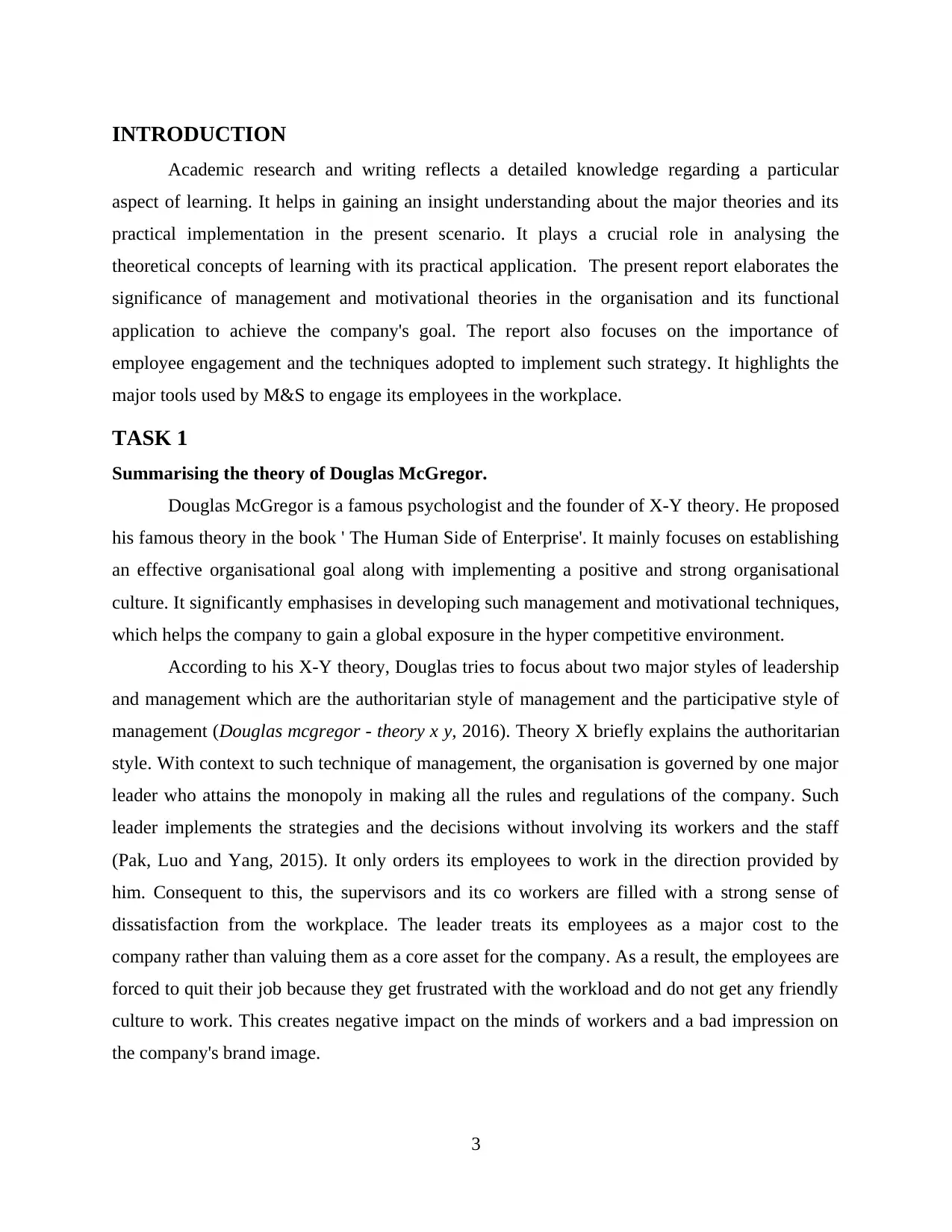
INTRODUCTION
Academic research and writing reflects a detailed knowledge regarding a particular
aspect of learning. It helps in gaining an insight understanding about the major theories and its
practical implementation in the present scenario. It plays a crucial role in analysing the
theoretical concepts of learning with its practical application. The present report elaborates the
significance of management and motivational theories in the organisation and its functional
application to achieve the company's goal. The report also focuses on the importance of
employee engagement and the techniques adopted to implement such strategy. It highlights the
major tools used by M&S to engage its employees in the workplace.
TASK 1
Summarising the theory of Douglas McGregor.
Douglas McGregor is a famous psychologist and the founder of X-Y theory. He proposed
his famous theory in the book ' The Human Side of Enterprise'. It mainly focuses on establishing
an effective organisational goal along with implementing a positive and strong organisational
culture. It significantly emphasises in developing such management and motivational techniques,
which helps the company to gain a global exposure in the hyper competitive environment.
According to his X-Y theory, Douglas tries to focus about two major styles of leadership
and management which are the authoritarian style of management and the participative style of
management (Douglas mcgregor - theory x y, 2016). Theory X briefly explains the authoritarian
style. With context to such technique of management, the organisation is governed by one major
leader who attains the monopoly in making all the rules and regulations of the company. Such
leader implements the strategies and the decisions without involving its workers and the staff
(Pak, Luo and Yang, 2015). It only orders its employees to work in the direction provided by
him. Consequent to this, the supervisors and its co workers are filled with a strong sense of
dissatisfaction from the workplace. The leader treats its employees as a major cost to the
company rather than valuing them as a core asset for the company. As a result, the employees are
forced to quit their job because they get frustrated with the workload and do not get any friendly
culture to work. This creates negative impact on the minds of workers and a bad impression on
the company's brand image.
3
Academic research and writing reflects a detailed knowledge regarding a particular
aspect of learning. It helps in gaining an insight understanding about the major theories and its
practical implementation in the present scenario. It plays a crucial role in analysing the
theoretical concepts of learning with its practical application. The present report elaborates the
significance of management and motivational theories in the organisation and its functional
application to achieve the company's goal. The report also focuses on the importance of
employee engagement and the techniques adopted to implement such strategy. It highlights the
major tools used by M&S to engage its employees in the workplace.
TASK 1
Summarising the theory of Douglas McGregor.
Douglas McGregor is a famous psychologist and the founder of X-Y theory. He proposed
his famous theory in the book ' The Human Side of Enterprise'. It mainly focuses on establishing
an effective organisational goal along with implementing a positive and strong organisational
culture. It significantly emphasises in developing such management and motivational techniques,
which helps the company to gain a global exposure in the hyper competitive environment.
According to his X-Y theory, Douglas tries to focus about two major styles of leadership
and management which are the authoritarian style of management and the participative style of
management (Douglas mcgregor - theory x y, 2016). Theory X briefly explains the authoritarian
style. With context to such technique of management, the organisation is governed by one major
leader who attains the monopoly in making all the rules and regulations of the company. Such
leader implements the strategies and the decisions without involving its workers and the staff
(Pak, Luo and Yang, 2015). It only orders its employees to work in the direction provided by
him. Consequent to this, the supervisors and its co workers are filled with a strong sense of
dissatisfaction from the workplace. The leader treats its employees as a major cost to the
company rather than valuing them as a core asset for the company. As a result, the employees are
forced to quit their job because they get frustrated with the workload and do not get any friendly
culture to work. This creates negative impact on the minds of workers and a bad impression on
the company's brand image.
3
⊘ This is a preview!⊘
Do you want full access?
Subscribe today to unlock all pages.

Trusted by 1+ million students worldwide
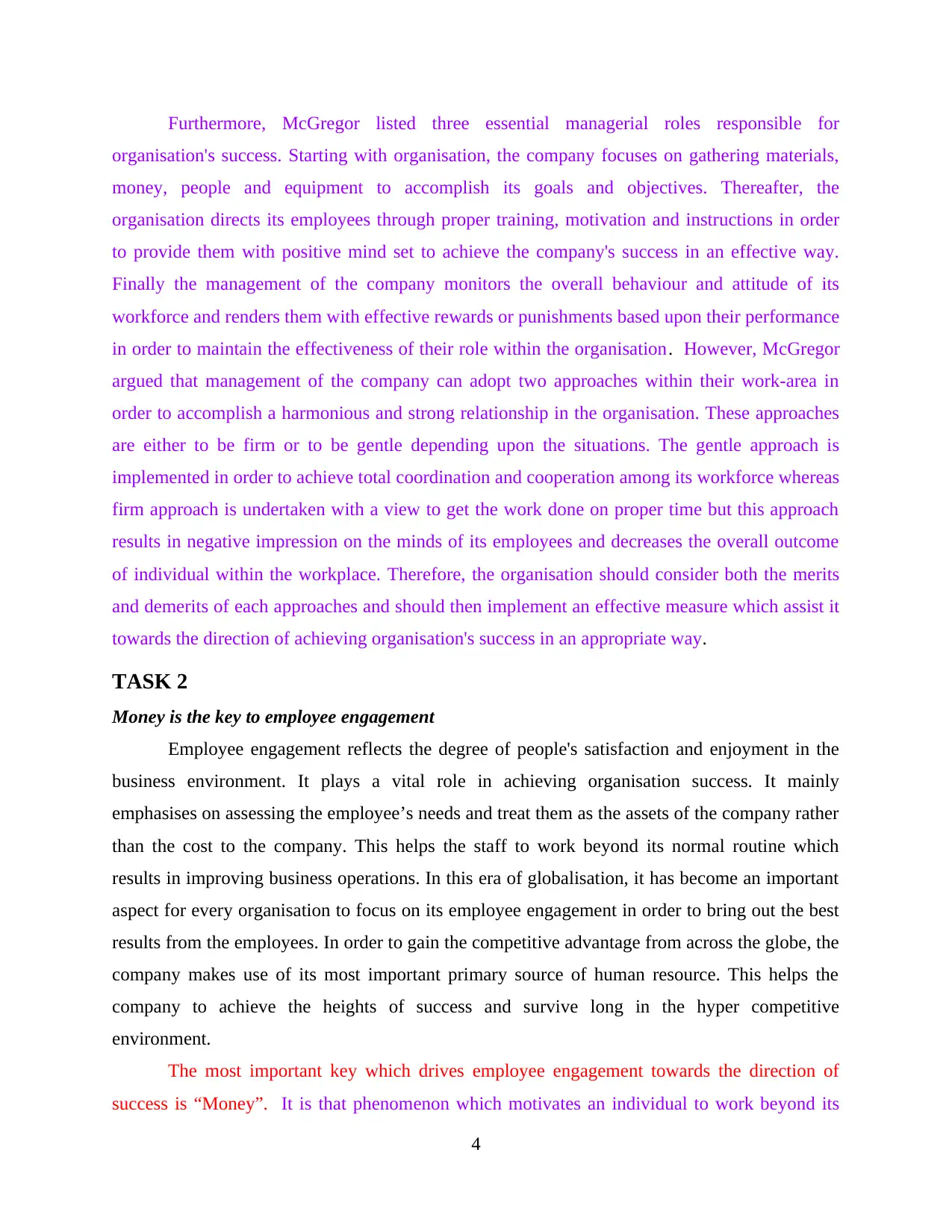
Furthermore, McGregor listed three essential managerial roles responsible for
organisation's success. Starting with organisation, the company focuses on gathering materials,
money, people and equipment to accomplish its goals and objectives. Thereafter, the
organisation directs its employees through proper training, motivation and instructions in order
to provide them with positive mind set to achieve the company's success in an effective way.
Finally the management of the company monitors the overall behaviour and attitude of its
workforce and renders them with effective rewards or punishments based upon their performance
in order to maintain the effectiveness of their role within the organisation. However, McGregor
argued that management of the company can adopt two approaches within their work-area in
order to accomplish a harmonious and strong relationship in the organisation. These approaches
are either to be firm or to be gentle depending upon the situations. The gentle approach is
implemented in order to achieve total coordination and cooperation among its workforce whereas
firm approach is undertaken with a view to get the work done on proper time but this approach
results in negative impression on the minds of its employees and decreases the overall outcome
of individual within the workplace. Therefore, the organisation should consider both the merits
and demerits of each approaches and should then implement an effective measure which assist it
towards the direction of achieving organisation's success in an appropriate way.
TASK 2
Money is the key to employee engagement
Employee engagement reflects the degree of people's satisfaction and enjoyment in the
business environment. It plays a vital role in achieving organisation success. It mainly
emphasises on assessing the employee’s needs and treat them as the assets of the company rather
than the cost to the company. This helps the staff to work beyond its normal routine which
results in improving business operations. In this era of globalisation, it has become an important
aspect for every organisation to focus on its employee engagement in order to bring out the best
results from the employees. In order to gain the competitive advantage from across the globe, the
company makes use of its most important primary source of human resource. This helps the
company to achieve the heights of success and survive long in the hyper competitive
environment.
The most important key which drives employee engagement towards the direction of
success is “Money”. It is that phenomenon which motivates an individual to work beyond its
4
organisation's success. Starting with organisation, the company focuses on gathering materials,
money, people and equipment to accomplish its goals and objectives. Thereafter, the
organisation directs its employees through proper training, motivation and instructions in order
to provide them with positive mind set to achieve the company's success in an effective way.
Finally the management of the company monitors the overall behaviour and attitude of its
workforce and renders them with effective rewards or punishments based upon their performance
in order to maintain the effectiveness of their role within the organisation. However, McGregor
argued that management of the company can adopt two approaches within their work-area in
order to accomplish a harmonious and strong relationship in the organisation. These approaches
are either to be firm or to be gentle depending upon the situations. The gentle approach is
implemented in order to achieve total coordination and cooperation among its workforce whereas
firm approach is undertaken with a view to get the work done on proper time but this approach
results in negative impression on the minds of its employees and decreases the overall outcome
of individual within the workplace. Therefore, the organisation should consider both the merits
and demerits of each approaches and should then implement an effective measure which assist it
towards the direction of achieving organisation's success in an appropriate way.
TASK 2
Money is the key to employee engagement
Employee engagement reflects the degree of people's satisfaction and enjoyment in the
business environment. It plays a vital role in achieving organisation success. It mainly
emphasises on assessing the employee’s needs and treat them as the assets of the company rather
than the cost to the company. This helps the staff to work beyond its normal routine which
results in improving business operations. In this era of globalisation, it has become an important
aspect for every organisation to focus on its employee engagement in order to bring out the best
results from the employees. In order to gain the competitive advantage from across the globe, the
company makes use of its most important primary source of human resource. This helps the
company to achieve the heights of success and survive long in the hyper competitive
environment.
The most important key which drives employee engagement towards the direction of
success is “Money”. It is that phenomenon which motivates an individual to work beyond its
4
Paraphrase This Document
Need a fresh take? Get an instant paraphrase of this document with our AI Paraphraser
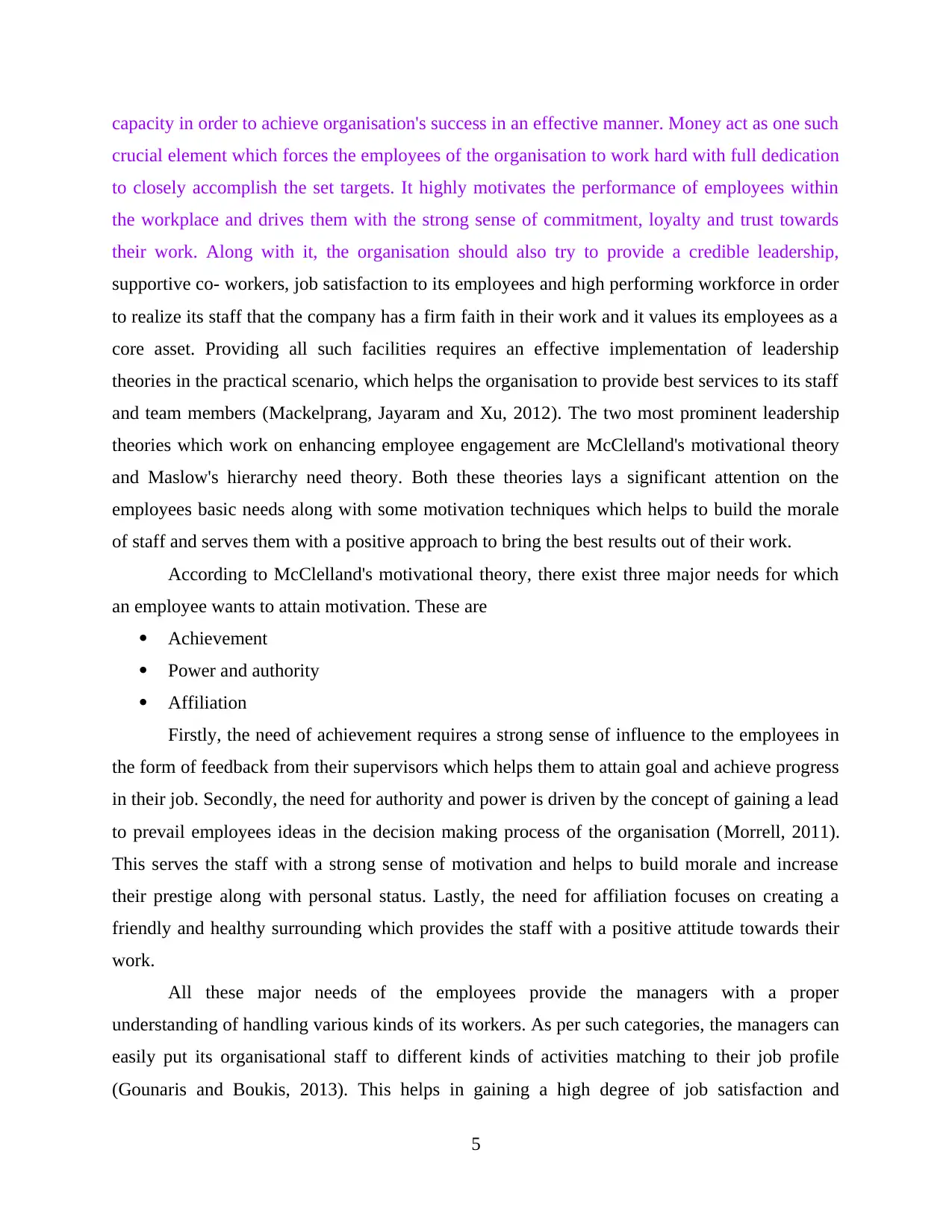
capacity in order to achieve organisation's success in an effective manner. Money act as one such
crucial element which forces the employees of the organisation to work hard with full dedication
to closely accomplish the set targets. It highly motivates the performance of employees within
the workplace and drives them with the strong sense of commitment, loyalty and trust towards
their work. Along with it, the organisation should also try to provide a credible leadership,
supportive co- workers, job satisfaction to its employees and high performing workforce in order
to realize its staff that the company has a firm faith in their work and it values its employees as a
core asset. Providing all such facilities requires an effective implementation of leadership
theories in the practical scenario, which helps the organisation to provide best services to its staff
and team members (Mackelprang, Jayaram and Xu, 2012). The two most prominent leadership
theories which work on enhancing employee engagement are McClelland's motivational theory
and Maslow's hierarchy need theory. Both these theories lays a significant attention on the
employees basic needs along with some motivation techniques which helps to build the morale
of staff and serves them with a positive approach to bring the best results out of their work.
According to McClelland's motivational theory, there exist three major needs for which
an employee wants to attain motivation. These are
Achievement
Power and authority
Affiliation
Firstly, the need of achievement requires a strong sense of influence to the employees in
the form of feedback from their supervisors which helps them to attain goal and achieve progress
in their job. Secondly, the need for authority and power is driven by the concept of gaining a lead
to prevail employees ideas in the decision making process of the organisation (Morrell, 2011).
This serves the staff with a strong sense of motivation and helps to build morale and increase
their prestige along with personal status. Lastly, the need for affiliation focuses on creating a
friendly and healthy surrounding which provides the staff with a positive attitude towards their
work.
All these major needs of the employees provide the managers with a proper
understanding of handling various kinds of its workers. As per such categories, the managers can
easily put its organisational staff to different kinds of activities matching to their job profile
(Gounaris and Boukis, 2013). This helps in gaining a high degree of job satisfaction and
5
crucial element which forces the employees of the organisation to work hard with full dedication
to closely accomplish the set targets. It highly motivates the performance of employees within
the workplace and drives them with the strong sense of commitment, loyalty and trust towards
their work. Along with it, the organisation should also try to provide a credible leadership,
supportive co- workers, job satisfaction to its employees and high performing workforce in order
to realize its staff that the company has a firm faith in their work and it values its employees as a
core asset. Providing all such facilities requires an effective implementation of leadership
theories in the practical scenario, which helps the organisation to provide best services to its staff
and team members (Mackelprang, Jayaram and Xu, 2012). The two most prominent leadership
theories which work on enhancing employee engagement are McClelland's motivational theory
and Maslow's hierarchy need theory. Both these theories lays a significant attention on the
employees basic needs along with some motivation techniques which helps to build the morale
of staff and serves them with a positive approach to bring the best results out of their work.
According to McClelland's motivational theory, there exist three major needs for which
an employee wants to attain motivation. These are
Achievement
Power and authority
Affiliation
Firstly, the need of achievement requires a strong sense of influence to the employees in
the form of feedback from their supervisors which helps them to attain goal and achieve progress
in their job. Secondly, the need for authority and power is driven by the concept of gaining a lead
to prevail employees ideas in the decision making process of the organisation (Morrell, 2011).
This serves the staff with a strong sense of motivation and helps to build morale and increase
their prestige along with personal status. Lastly, the need for affiliation focuses on creating a
friendly and healthy surrounding which provides the staff with a positive attitude towards their
work.
All these major needs of the employees provide the managers with a proper
understanding of handling various kinds of its workers. As per such categories, the managers can
easily put its organisational staff to different kinds of activities matching to their job profile
(Gounaris and Boukis, 2013). This helps in gaining a high degree of job satisfaction and
5
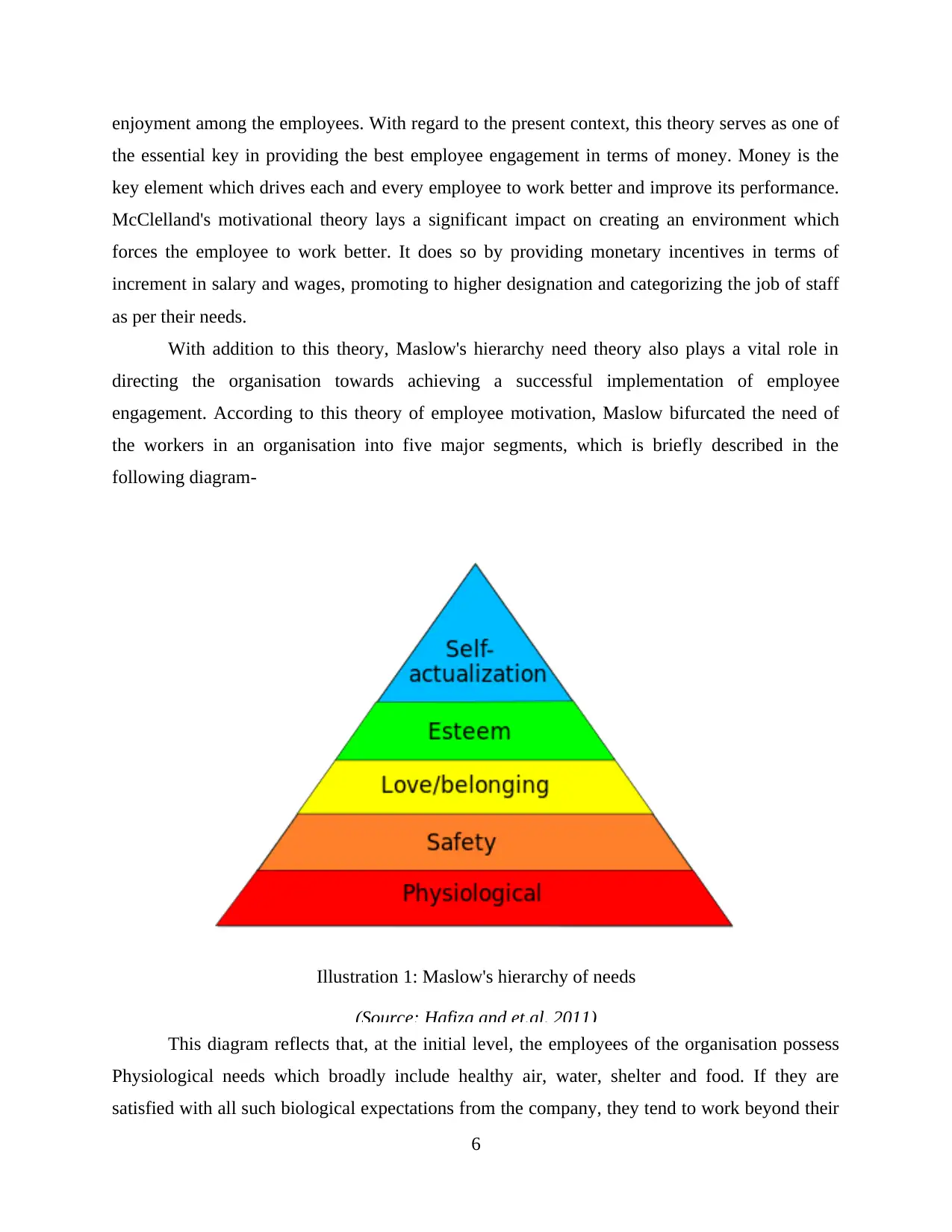
enjoyment among the employees. With regard to the present context, this theory serves as one of
the essential key in providing the best employee engagement in terms of money. Money is the
key element which drives each and every employee to work better and improve its performance.
McClelland's motivational theory lays a significant impact on creating an environment which
forces the employee to work better. It does so by providing monetary incentives in terms of
increment in salary and wages, promoting to higher designation and categorizing the job of staff
as per their needs.
With addition to this theory, Maslow's hierarchy need theory also plays a vital role in
directing the organisation towards achieving a successful implementation of employee
engagement. According to this theory of employee motivation, Maslow bifurcated the need of
the workers in an organisation into five major segments, which is briefly described in the
following diagram-
Illustration 1: Maslow's hierarchy of needs
(Source: Hafiza and et.al, 2011)
This diagram reflects that, at the initial level, the employees of the organisation possess
Physiological needs which broadly include healthy air, water, shelter and food. If they are
satisfied with all such biological expectations from the company, they tend to work beyond their
6
the essential key in providing the best employee engagement in terms of money. Money is the
key element which drives each and every employee to work better and improve its performance.
McClelland's motivational theory lays a significant impact on creating an environment which
forces the employee to work better. It does so by providing monetary incentives in terms of
increment in salary and wages, promoting to higher designation and categorizing the job of staff
as per their needs.
With addition to this theory, Maslow's hierarchy need theory also plays a vital role in
directing the organisation towards achieving a successful implementation of employee
engagement. According to this theory of employee motivation, Maslow bifurcated the need of
the workers in an organisation into five major segments, which is briefly described in the
following diagram-
Illustration 1: Maslow's hierarchy of needs
(Source: Hafiza and et.al, 2011)
This diagram reflects that, at the initial level, the employees of the organisation possess
Physiological needs which broadly include healthy air, water, shelter and food. If they are
satisfied with all such biological expectations from the company, they tend to work beyond their
6
⊘ This is a preview!⊘
Do you want full access?
Subscribe today to unlock all pages.

Trusted by 1+ million students worldwide
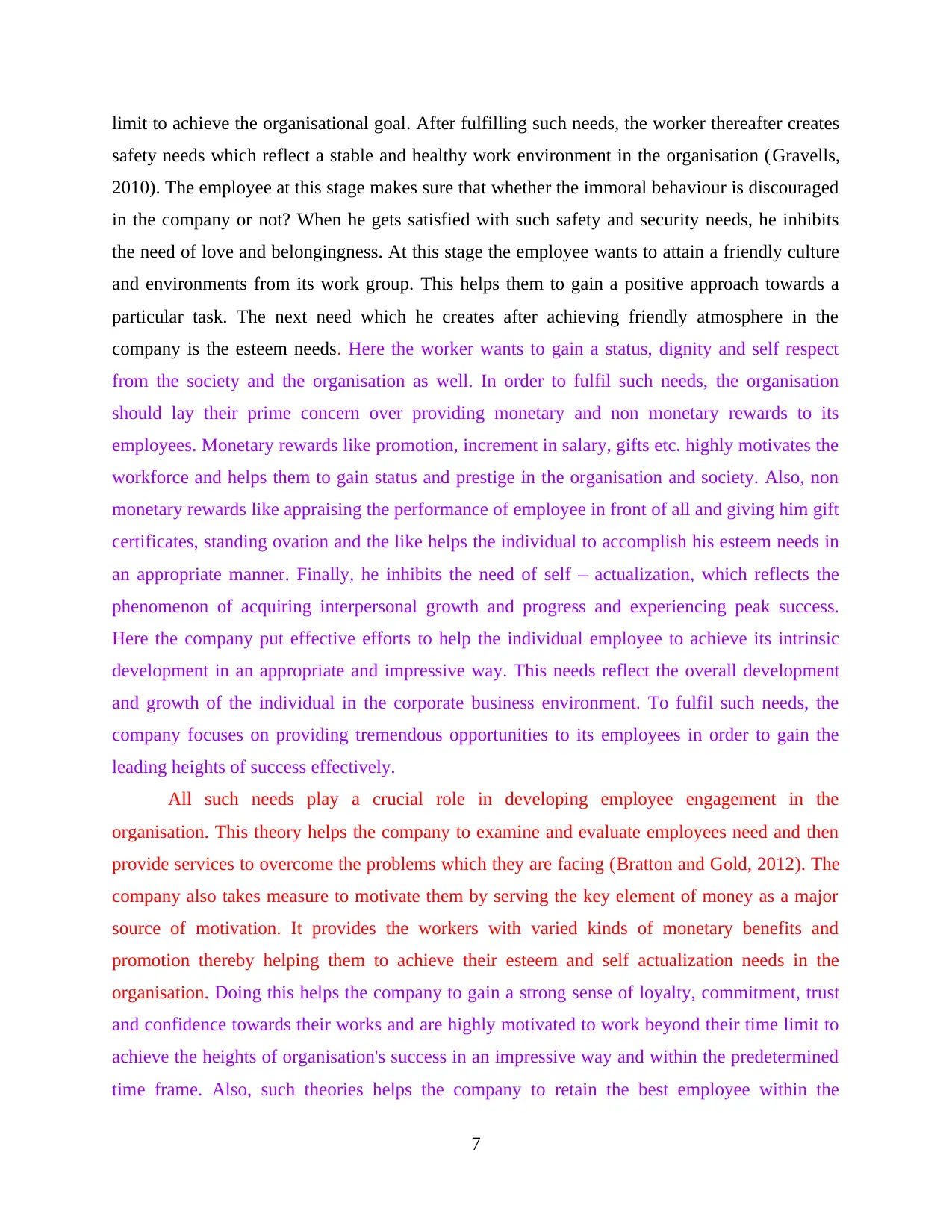
limit to achieve the organisational goal. After fulfilling such needs, the worker thereafter creates
safety needs which reflect a stable and healthy work environment in the organisation (Gravells,
2010). The employee at this stage makes sure that whether the immoral behaviour is discouraged
in the company or not? When he gets satisfied with such safety and security needs, he inhibits
the need of love and belongingness. At this stage the employee wants to attain a friendly culture
and environments from its work group. This helps them to gain a positive approach towards a
particular task. The next need which he creates after achieving friendly atmosphere in the
company is the esteem needs. Here the worker wants to gain a status, dignity and self respect
from the society and the organisation as well. In order to fulfil such needs, the organisation
should lay their prime concern over providing monetary and non monetary rewards to its
employees. Monetary rewards like promotion, increment in salary, gifts etc. highly motivates the
workforce and helps them to gain status and prestige in the organisation and society. Also, non
monetary rewards like appraising the performance of employee in front of all and giving him gift
certificates, standing ovation and the like helps the individual to accomplish his esteem needs in
an appropriate manner. Finally, he inhibits the need of self – actualization, which reflects the
phenomenon of acquiring interpersonal growth and progress and experiencing peak success.
Here the company put effective efforts to help the individual employee to achieve its intrinsic
development in an appropriate and impressive way. This needs reflect the overall development
and growth of the individual in the corporate business environment. To fulfil such needs, the
company focuses on providing tremendous opportunities to its employees in order to gain the
leading heights of success effectively.
All such needs play a crucial role in developing employee engagement in the
organisation. This theory helps the company to examine and evaluate employees need and then
provide services to overcome the problems which they are facing (Bratton and Gold, 2012). The
company also takes measure to motivate them by serving the key element of money as a major
source of motivation. It provides the workers with varied kinds of monetary benefits and
promotion thereby helping them to achieve their esteem and self actualization needs in the
organisation. Doing this helps the company to gain a strong sense of loyalty, commitment, trust
and confidence towards their works and are highly motivated to work beyond their time limit to
achieve the heights of organisation's success in an impressive way and within the predetermined
time frame. Also, such theories helps the company to retain the best employee within the
7
safety needs which reflect a stable and healthy work environment in the organisation (Gravells,
2010). The employee at this stage makes sure that whether the immoral behaviour is discouraged
in the company or not? When he gets satisfied with such safety and security needs, he inhibits
the need of love and belongingness. At this stage the employee wants to attain a friendly culture
and environments from its work group. This helps them to gain a positive approach towards a
particular task. The next need which he creates after achieving friendly atmosphere in the
company is the esteem needs. Here the worker wants to gain a status, dignity and self respect
from the society and the organisation as well. In order to fulfil such needs, the organisation
should lay their prime concern over providing monetary and non monetary rewards to its
employees. Monetary rewards like promotion, increment in salary, gifts etc. highly motivates the
workforce and helps them to gain status and prestige in the organisation and society. Also, non
monetary rewards like appraising the performance of employee in front of all and giving him gift
certificates, standing ovation and the like helps the individual to accomplish his esteem needs in
an appropriate manner. Finally, he inhibits the need of self – actualization, which reflects the
phenomenon of acquiring interpersonal growth and progress and experiencing peak success.
Here the company put effective efforts to help the individual employee to achieve its intrinsic
development in an appropriate and impressive way. This needs reflect the overall development
and growth of the individual in the corporate business environment. To fulfil such needs, the
company focuses on providing tremendous opportunities to its employees in order to gain the
leading heights of success effectively.
All such needs play a crucial role in developing employee engagement in the
organisation. This theory helps the company to examine and evaluate employees need and then
provide services to overcome the problems which they are facing (Bratton and Gold, 2012). The
company also takes measure to motivate them by serving the key element of money as a major
source of motivation. It provides the workers with varied kinds of monetary benefits and
promotion thereby helping them to achieve their esteem and self actualization needs in the
organisation. Doing this helps the company to gain a strong sense of loyalty, commitment, trust
and confidence towards their works and are highly motivated to work beyond their time limit to
achieve the heights of organisation's success in an impressive way and within the predetermined
time frame. Also, such theories helps the company to retain the best employee within the
7
Paraphrase This Document
Need a fresh take? Get an instant paraphrase of this document with our AI Paraphraser
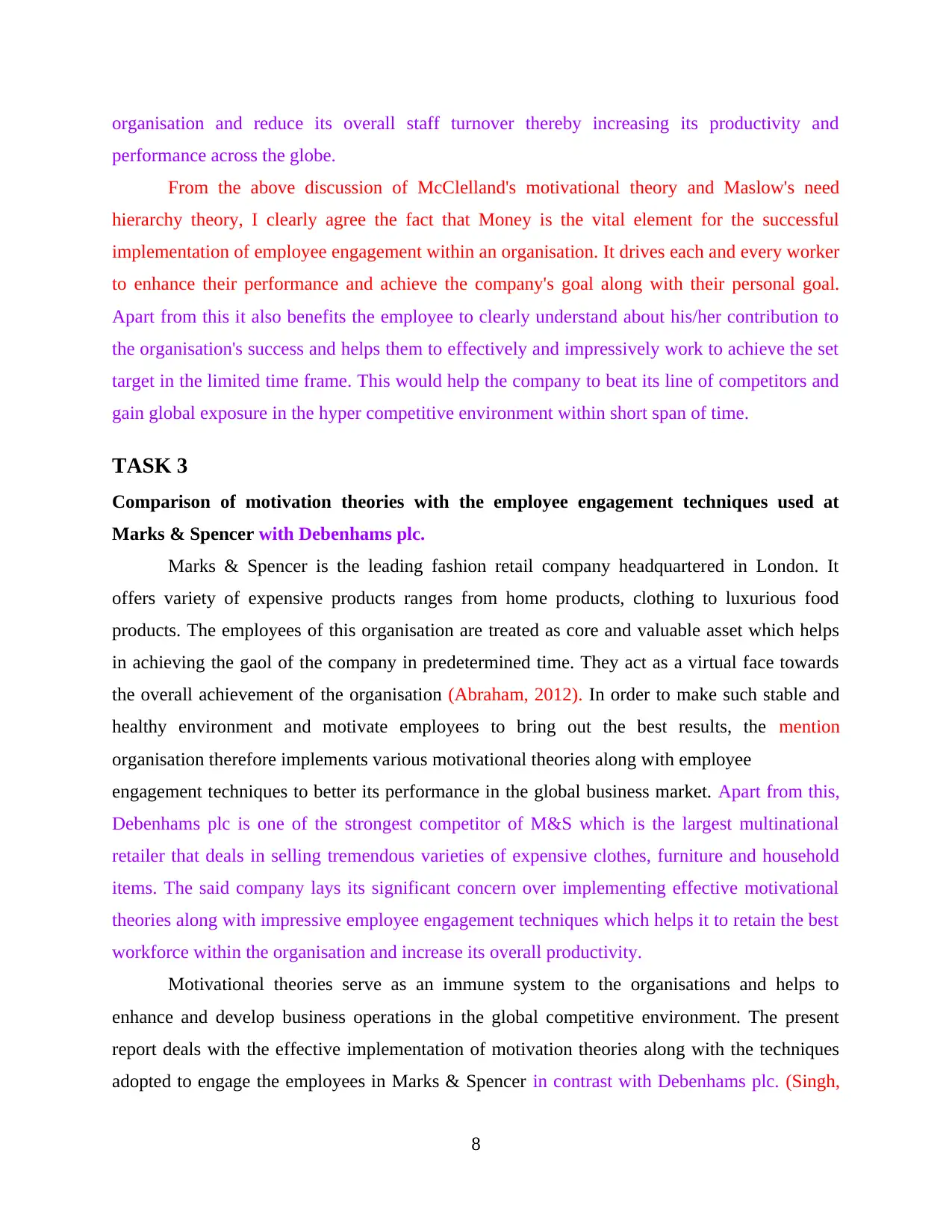
organisation and reduce its overall staff turnover thereby increasing its productivity and
performance across the globe.
From the above discussion of McClelland's motivational theory and Maslow's need
hierarchy theory, I clearly agree the fact that Money is the vital element for the successful
implementation of employee engagement within an organisation. It drives each and every worker
to enhance their performance and achieve the company's goal along with their personal goal.
Apart from this it also benefits the employee to clearly understand about his/her contribution to
the organisation's success and helps them to effectively and impressively work to achieve the set
target in the limited time frame. This would help the company to beat its line of competitors and
gain global exposure in the hyper competitive environment within short span of time.
TASK 3
Comparison of motivation theories with the employee engagement techniques used at
Marks & Spencer with Debenhams plc.
Marks & Spencer is the leading fashion retail company headquartered in London. It
offers variety of expensive products ranges from home products, clothing to luxurious food
products. The employees of this organisation are treated as core and valuable asset which helps
in achieving the gaol of the company in predetermined time. They act as a virtual face towards
the overall achievement of the organisation (Abraham, 2012). In order to make such stable and
healthy environment and motivate employees to bring out the best results, the mention
organisation therefore implements various motivational theories along with employee
engagement techniques to better its performance in the global business market. Apart from this,
Debenhams plc is one of the strongest competitor of M&S which is the largest multinational
retailer that deals in selling tremendous varieties of expensive clothes, furniture and household
items. The said company lays its significant concern over implementing effective motivational
theories along with impressive employee engagement techniques which helps it to retain the best
workforce within the organisation and increase its overall productivity.
Motivational theories serve as an immune system to the organisations and helps to
enhance and develop business operations in the global competitive environment. The present
report deals with the effective implementation of motivation theories along with the techniques
adopted to engage the employees in Marks & Spencer in contrast with Debenhams plc. (Singh,
8
performance across the globe.
From the above discussion of McClelland's motivational theory and Maslow's need
hierarchy theory, I clearly agree the fact that Money is the vital element for the successful
implementation of employee engagement within an organisation. It drives each and every worker
to enhance their performance and achieve the company's goal along with their personal goal.
Apart from this it also benefits the employee to clearly understand about his/her contribution to
the organisation's success and helps them to effectively and impressively work to achieve the set
target in the limited time frame. This would help the company to beat its line of competitors and
gain global exposure in the hyper competitive environment within short span of time.
TASK 3
Comparison of motivation theories with the employee engagement techniques used at
Marks & Spencer with Debenhams plc.
Marks & Spencer is the leading fashion retail company headquartered in London. It
offers variety of expensive products ranges from home products, clothing to luxurious food
products. The employees of this organisation are treated as core and valuable asset which helps
in achieving the gaol of the company in predetermined time. They act as a virtual face towards
the overall achievement of the organisation (Abraham, 2012). In order to make such stable and
healthy environment and motivate employees to bring out the best results, the mention
organisation therefore implements various motivational theories along with employee
engagement techniques to better its performance in the global business market. Apart from this,
Debenhams plc is one of the strongest competitor of M&S which is the largest multinational
retailer that deals in selling tremendous varieties of expensive clothes, furniture and household
items. The said company lays its significant concern over implementing effective motivational
theories along with impressive employee engagement techniques which helps it to retain the best
workforce within the organisation and increase its overall productivity.
Motivational theories serve as an immune system to the organisations and helps to
enhance and develop business operations in the global competitive environment. The present
report deals with the effective implementation of motivation theories along with the techniques
adopted to engage the employees in Marks & Spencer in contrast with Debenhams plc. (Singh,
8
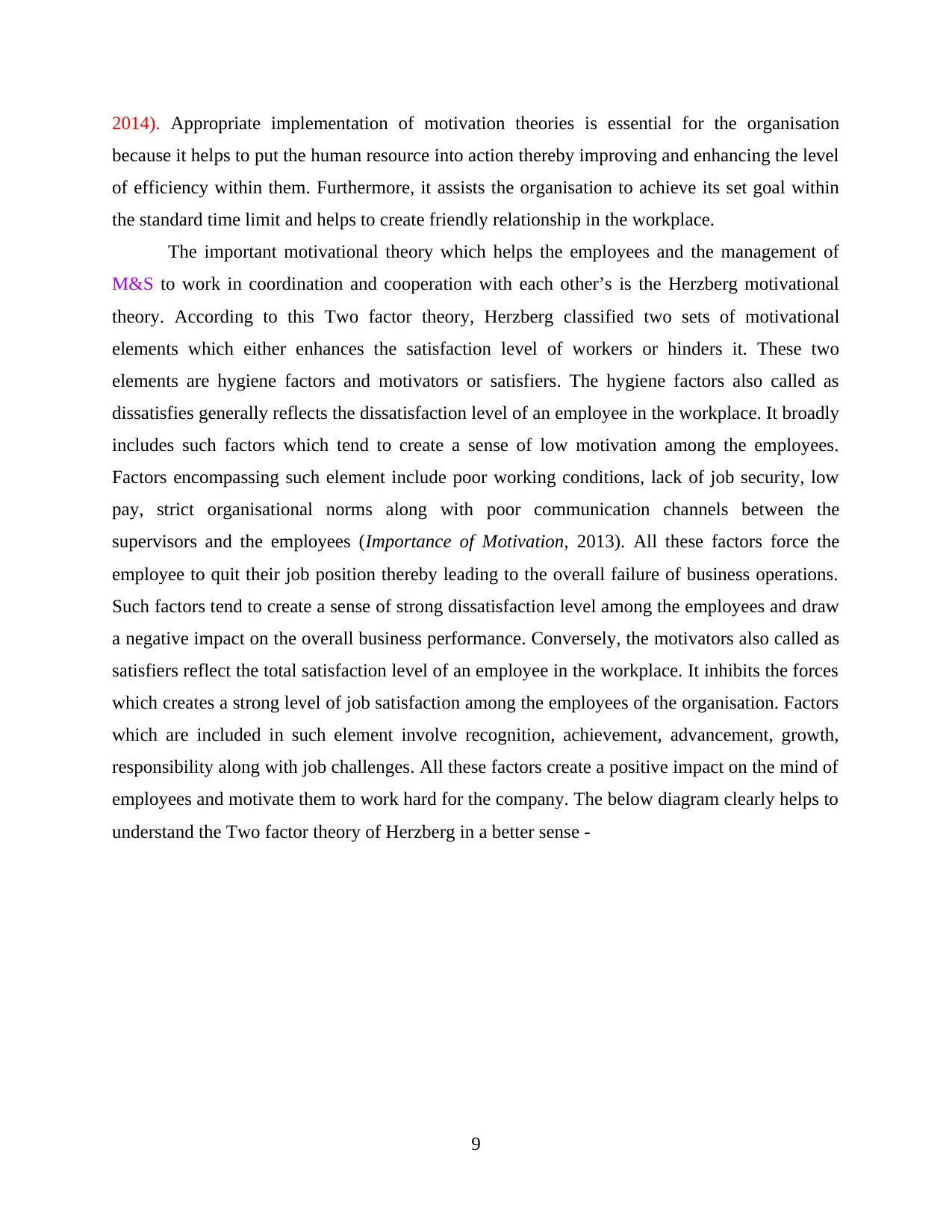
2014). Appropriate implementation of motivation theories is essential for the organisation
because it helps to put the human resource into action thereby improving and enhancing the level
of efficiency within them. Furthermore, it assists the organisation to achieve its set goal within
the standard time limit and helps to create friendly relationship in the workplace.
The important motivational theory which helps the employees and the management of
M&S to work in coordination and cooperation with each other’s is the Herzberg motivational
theory. According to this Two factor theory, Herzberg classified two sets of motivational
elements which either enhances the satisfaction level of workers or hinders it. These two
elements are hygiene factors and motivators or satisfiers. The hygiene factors also called as
dissatisfies generally reflects the dissatisfaction level of an employee in the workplace. It broadly
includes such factors which tend to create a sense of low motivation among the employees.
Factors encompassing such element include poor working conditions, lack of job security, low
pay, strict organisational norms along with poor communication channels between the
supervisors and the employees (Importance of Motivation, 2013). All these factors force the
employee to quit their job position thereby leading to the overall failure of business operations.
Such factors tend to create a sense of strong dissatisfaction level among the employees and draw
a negative impact on the overall business performance. Conversely, the motivators also called as
satisfiers reflect the total satisfaction level of an employee in the workplace. It inhibits the forces
which creates a strong level of job satisfaction among the employees of the organisation. Factors
which are included in such element involve recognition, achievement, advancement, growth,
responsibility along with job challenges. All these factors create a positive impact on the mind of
employees and motivate them to work hard for the company. The below diagram clearly helps to
understand the Two factor theory of Herzberg in a better sense -
9
because it helps to put the human resource into action thereby improving and enhancing the level
of efficiency within them. Furthermore, it assists the organisation to achieve its set goal within
the standard time limit and helps to create friendly relationship in the workplace.
The important motivational theory which helps the employees and the management of
M&S to work in coordination and cooperation with each other’s is the Herzberg motivational
theory. According to this Two factor theory, Herzberg classified two sets of motivational
elements which either enhances the satisfaction level of workers or hinders it. These two
elements are hygiene factors and motivators or satisfiers. The hygiene factors also called as
dissatisfies generally reflects the dissatisfaction level of an employee in the workplace. It broadly
includes such factors which tend to create a sense of low motivation among the employees.
Factors encompassing such element include poor working conditions, lack of job security, low
pay, strict organisational norms along with poor communication channels between the
supervisors and the employees (Importance of Motivation, 2013). All these factors force the
employee to quit their job position thereby leading to the overall failure of business operations.
Such factors tend to create a sense of strong dissatisfaction level among the employees and draw
a negative impact on the overall business performance. Conversely, the motivators also called as
satisfiers reflect the total satisfaction level of an employee in the workplace. It inhibits the forces
which creates a strong level of job satisfaction among the employees of the organisation. Factors
which are included in such element involve recognition, achievement, advancement, growth,
responsibility along with job challenges. All these factors create a positive impact on the mind of
employees and motivate them to work hard for the company. The below diagram clearly helps to
understand the Two factor theory of Herzberg in a better sense -
9
⊘ This is a preview!⊘
Do you want full access?
Subscribe today to unlock all pages.

Trusted by 1+ million students worldwide
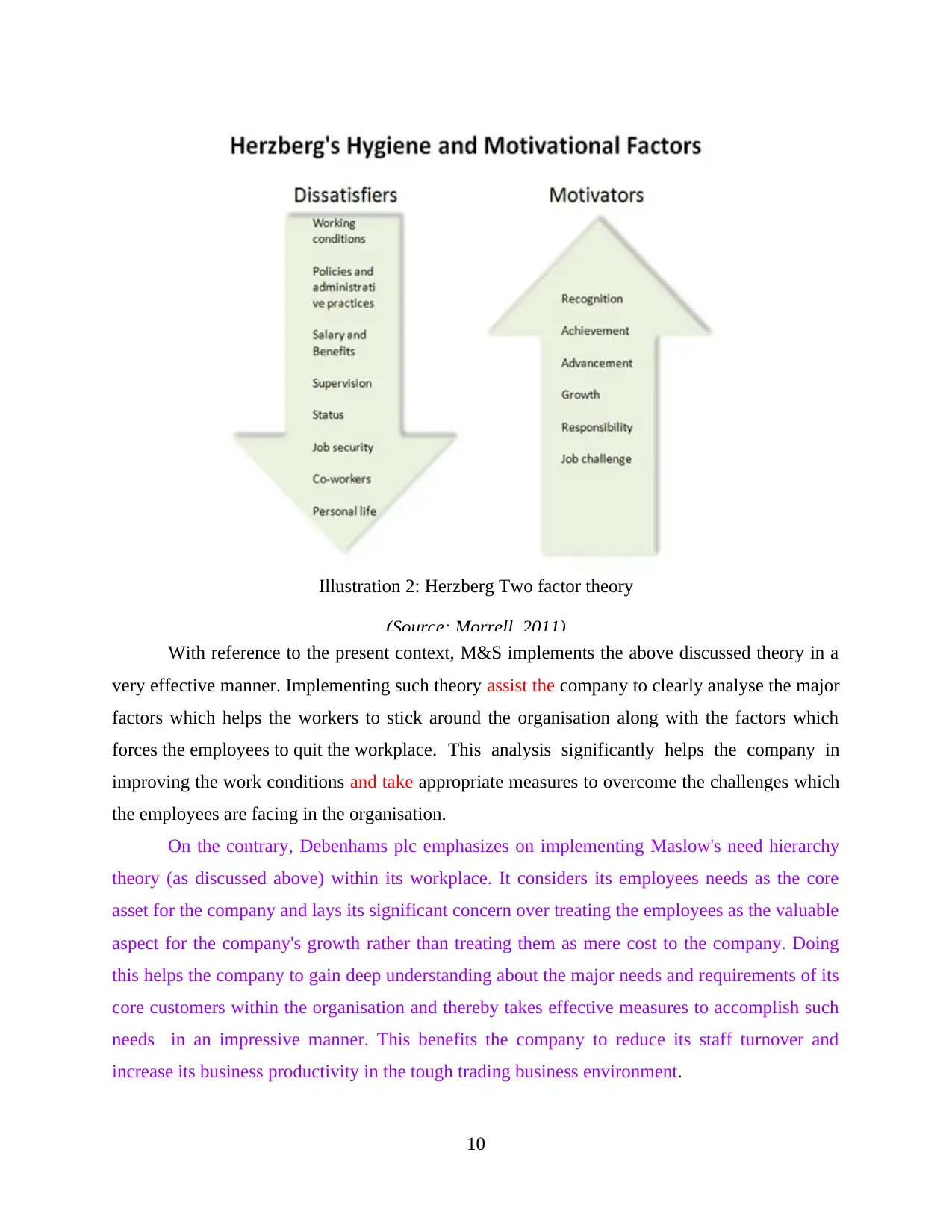
Illustration 2: Herzberg Two factor theory
(Source: Morrell, 2011)
With reference to the present context, M&S implements the above discussed theory in a
very effective manner. Implementing such theory assist the company to clearly analyse the major
factors which helps the workers to stick around the organisation along with the factors which
forces the employees to quit the workplace. This analysis significantly helps the company in
improving the work conditions and take appropriate measures to overcome the challenges which
the employees are facing in the organisation.
On the contrary, Debenhams plc emphasizes on implementing Maslow's need hierarchy
theory (as discussed above) within its workplace. It considers its employees needs as the core
asset for the company and lays its significant concern over treating the employees as the valuable
aspect for the company's growth rather than treating them as mere cost to the company. Doing
this helps the company to gain deep understanding about the major needs and requirements of its
core customers within the organisation and thereby takes effective measures to accomplish such
needs in an impressive manner. This benefits the company to reduce its staff turnover and
increase its business productivity in the tough trading business environment.
10
(Source: Morrell, 2011)
With reference to the present context, M&S implements the above discussed theory in a
very effective manner. Implementing such theory assist the company to clearly analyse the major
factors which helps the workers to stick around the organisation along with the factors which
forces the employees to quit the workplace. This analysis significantly helps the company in
improving the work conditions and take appropriate measures to overcome the challenges which
the employees are facing in the organisation.
On the contrary, Debenhams plc emphasizes on implementing Maslow's need hierarchy
theory (as discussed above) within its workplace. It considers its employees needs as the core
asset for the company and lays its significant concern over treating the employees as the valuable
aspect for the company's growth rather than treating them as mere cost to the company. Doing
this helps the company to gain deep understanding about the major needs and requirements of its
core customers within the organisation and thereby takes effective measures to accomplish such
needs in an impressive manner. This benefits the company to reduce its staff turnover and
increase its business productivity in the tough trading business environment.
10
Paraphrase This Document
Need a fresh take? Get an instant paraphrase of this document with our AI Paraphraser
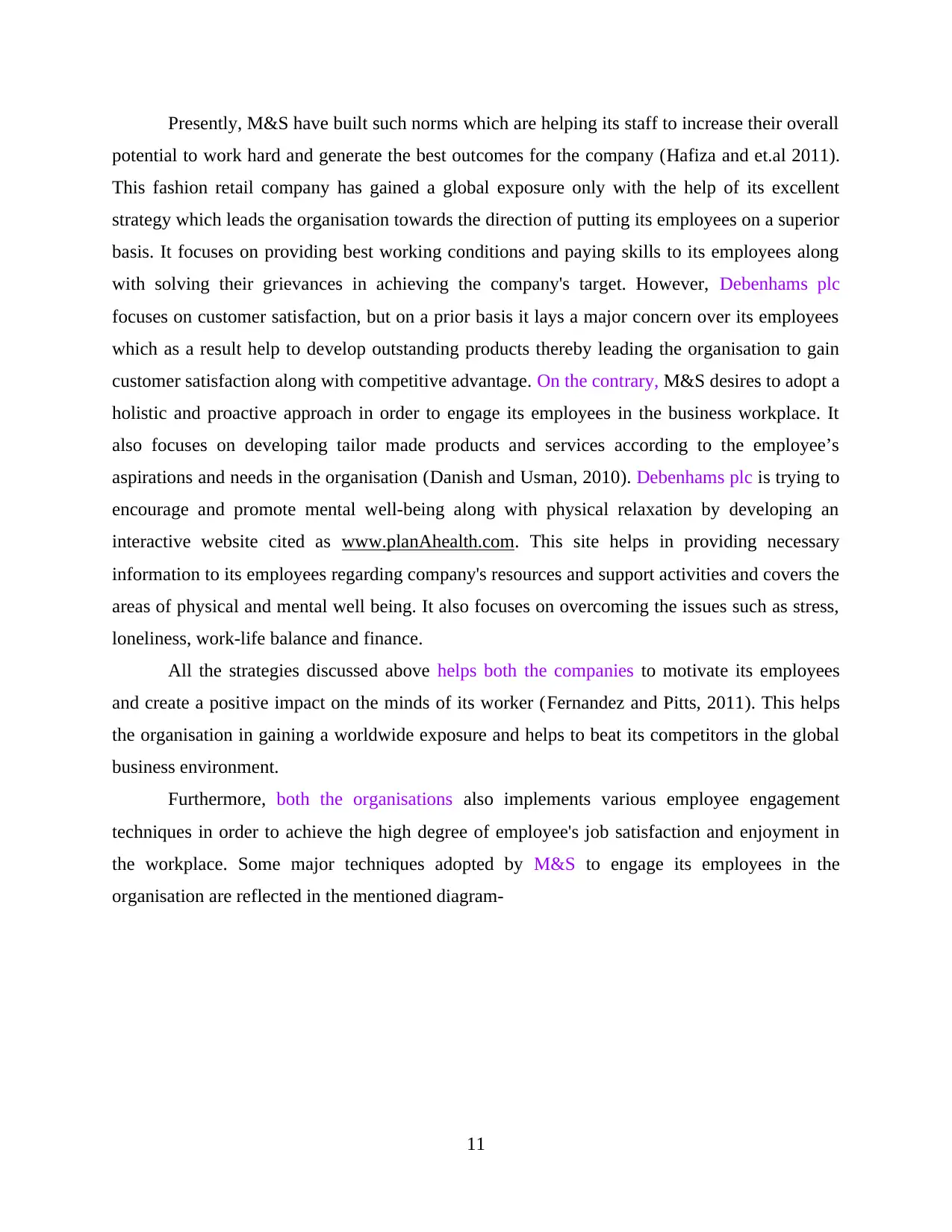
Presently, M&S have built such norms which are helping its staff to increase their overall
potential to work hard and generate the best outcomes for the company (Hafiza and et.al 2011).
This fashion retail company has gained a global exposure only with the help of its excellent
strategy which leads the organisation towards the direction of putting its employees on a superior
basis. It focuses on providing best working conditions and paying skills to its employees along
with solving their grievances in achieving the company's target. However, Debenhams plc
focuses on customer satisfaction, but on a prior basis it lays a major concern over its employees
which as a result help to develop outstanding products thereby leading the organisation to gain
customer satisfaction along with competitive advantage. On the contrary, M&S desires to adopt a
holistic and proactive approach in order to engage its employees in the business workplace. It
also focuses on developing tailor made products and services according to the employee’s
aspirations and needs in the organisation (Danish and Usman, 2010). Debenhams plc is trying to
encourage and promote mental well-being along with physical relaxation by developing an
interactive website cited as www.planAhealth.com. This site helps in providing necessary
information to its employees regarding company's resources and support activities and covers the
areas of physical and mental well being. It also focuses on overcoming the issues such as stress,
loneliness, work-life balance and finance.
All the strategies discussed above helps both the companies to motivate its employees
and create a positive impact on the minds of its worker (Fernandez and Pitts, 2011). This helps
the organisation in gaining a worldwide exposure and helps to beat its competitors in the global
business environment.
Furthermore, both the organisations also implements various employee engagement
techniques in order to achieve the high degree of employee's job satisfaction and enjoyment in
the workplace. Some major techniques adopted by M&S to engage its employees in the
organisation are reflected in the mentioned diagram-
11
potential to work hard and generate the best outcomes for the company (Hafiza and et.al 2011).
This fashion retail company has gained a global exposure only with the help of its excellent
strategy which leads the organisation towards the direction of putting its employees on a superior
basis. It focuses on providing best working conditions and paying skills to its employees along
with solving their grievances in achieving the company's target. However, Debenhams plc
focuses on customer satisfaction, but on a prior basis it lays a major concern over its employees
which as a result help to develop outstanding products thereby leading the organisation to gain
customer satisfaction along with competitive advantage. On the contrary, M&S desires to adopt a
holistic and proactive approach in order to engage its employees in the business workplace. It
also focuses on developing tailor made products and services according to the employee’s
aspirations and needs in the organisation (Danish and Usman, 2010). Debenhams plc is trying to
encourage and promote mental well-being along with physical relaxation by developing an
interactive website cited as www.planAhealth.com. This site helps in providing necessary
information to its employees regarding company's resources and support activities and covers the
areas of physical and mental well being. It also focuses on overcoming the issues such as stress,
loneliness, work-life balance and finance.
All the strategies discussed above helps both the companies to motivate its employees
and create a positive impact on the minds of its worker (Fernandez and Pitts, 2011). This helps
the organisation in gaining a worldwide exposure and helps to beat its competitors in the global
business environment.
Furthermore, both the organisations also implements various employee engagement
techniques in order to achieve the high degree of employee's job satisfaction and enjoyment in
the workplace. Some major techniques adopted by M&S to engage its employees in the
organisation are reflected in the mentioned diagram-
11
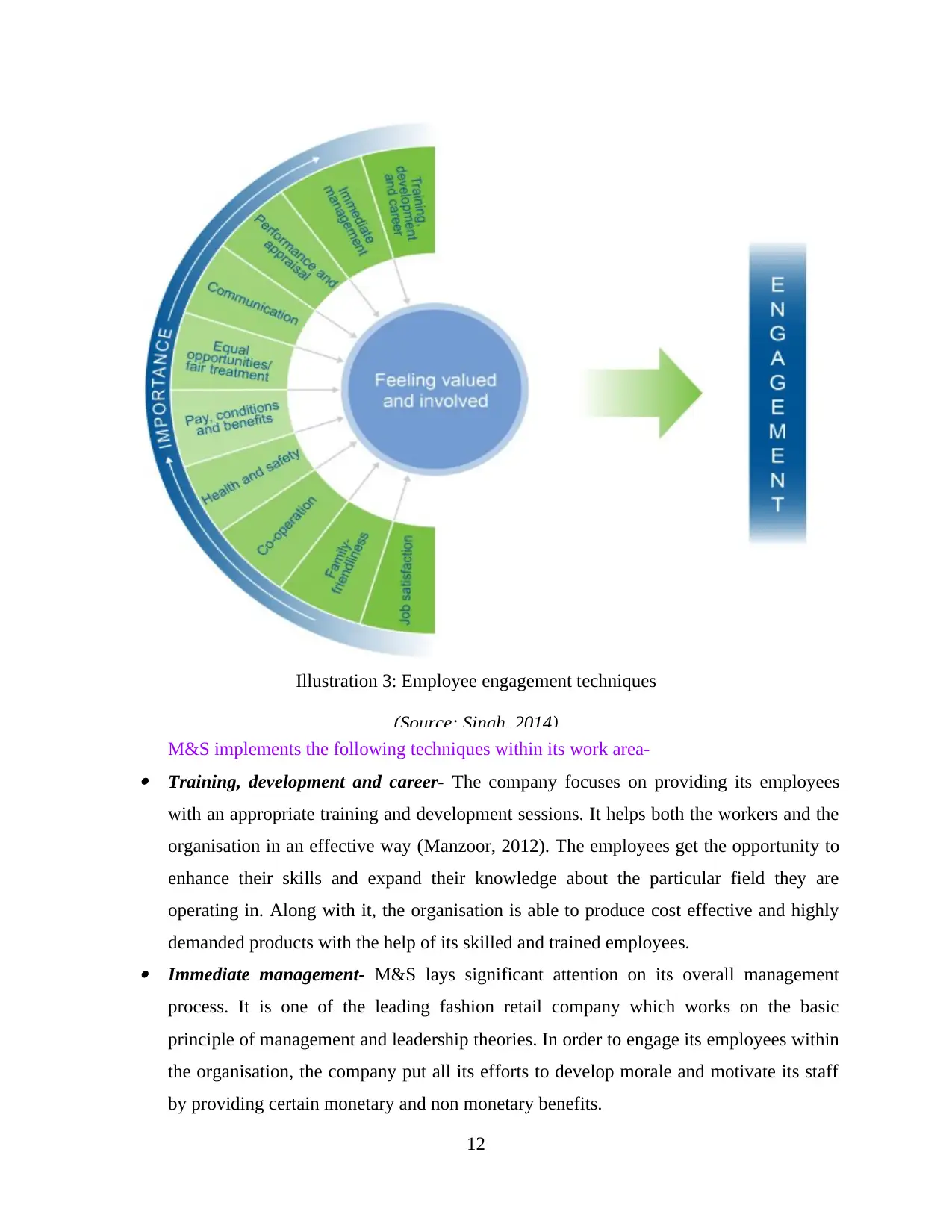
Illustration 3: Employee engagement techniques
(Source: Singh, 2014)
M&S implements the following techniques within its work area- Training, development and career- The company focuses on providing its employees
with an appropriate training and development sessions. It helps both the workers and the
organisation in an effective way (Manzoor, 2012). The employees get the opportunity to
enhance their skills and expand their knowledge about the particular field they are
operating in. Along with it, the organisation is able to produce cost effective and highly
demanded products with the help of its skilled and trained employees. Immediate management- M&S lays significant attention on its overall management
process. It is one of the leading fashion retail company which works on the basic
principle of management and leadership theories. In order to engage its employees within
the organisation, the company put all its efforts to develop morale and motivate its staff
by providing certain monetary and non monetary benefits.
12
(Source: Singh, 2014)
M&S implements the following techniques within its work area- Training, development and career- The company focuses on providing its employees
with an appropriate training and development sessions. It helps both the workers and the
organisation in an effective way (Manzoor, 2012). The employees get the opportunity to
enhance their skills and expand their knowledge about the particular field they are
operating in. Along with it, the organisation is able to produce cost effective and highly
demanded products with the help of its skilled and trained employees. Immediate management- M&S lays significant attention on its overall management
process. It is one of the leading fashion retail company which works on the basic
principle of management and leadership theories. In order to engage its employees within
the organisation, the company put all its efforts to develop morale and motivate its staff
by providing certain monetary and non monetary benefits.
12
⊘ This is a preview!⊘
Do you want full access?
Subscribe today to unlock all pages.

Trusted by 1+ million students worldwide
1 out of 17
Related Documents
Your All-in-One AI-Powered Toolkit for Academic Success.
+13062052269
info@desklib.com
Available 24*7 on WhatsApp / Email
![[object Object]](/_next/static/media/star-bottom.7253800d.svg)
Unlock your academic potential
Copyright © 2020–2025 A2Z Services. All Rights Reserved. Developed and managed by ZUCOL.





